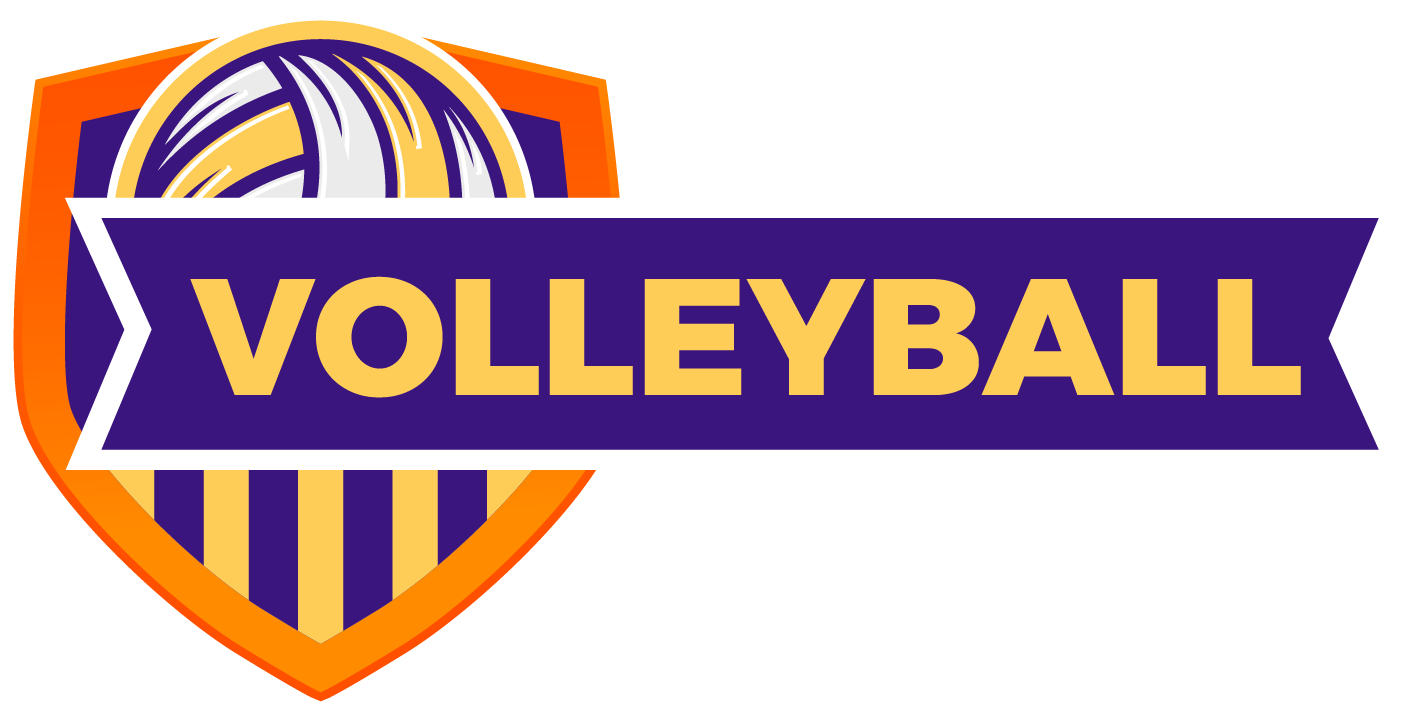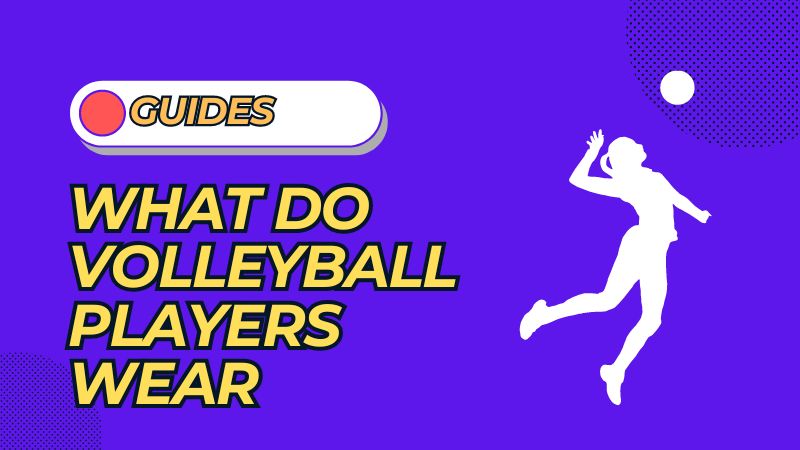Volleyball is a sport that combines agility and style. The attire players wear is crucial for performance and comfort on the court. Typically, jerseys, shorts, and knee pads constitute the common ensemble, ensuring players can easily dive and spike.
Recently, leggings have emerged as a popular choice, particularly among female players. They offer a snug fit and stretchy fabric, allowing unrestricted movement. Moreover, they provide full coverage, which some find to offer a sense of modesty and confidence on the court.
The shift towards leggings isn’t just a fashion statement. It addresses some pain points associated with traditional volleyball shorts. As we delve deeper into the volleyball attire landscape, we’ll explore why leggings are gaining traction and how they compare to traditional shorts.
What Do Volleyball Players Wear?
Volleyball, a dynamic sport with a rhythm of its own, demands attire that complements the agility and vigorous movements of the players. The attire, varying slightly between indoor and beach volleyball, primarily includes jerseys or tops, shorts or leggings, knee pads, socks, and appropriate footwear. Accessorizing right with items like wristbands or elbow pads further adds a layer of protection.
Volleyball Jerseys And Tops
The jersey is often the most distinguishable part of a volleyball player’s attire. It’s about representing the team and ensuring comfort and mobility during gameplay.
T-shirts and tank tops are standard, balancing ease of movement and coverage. While choosing between a loose and tight fit is personal, a form-fitting jersey that doesn’t restrict movement is often recommended.
Specialized athletic fits, crafted from materials like microfibers and polyester, are designed to wick away sweat, keeping players comfortable throughout the match.
Volleyball Shorts
Shorts are a pivotal part of the attire, facilitating unrestricted lower-body movement. Women often prefer spandex shorts due to their flexibility and breathability, while men might opt for gym-style shorts.
Some players wear a longer spandex pair underneath for additional support and protection. The advent of Capri pants and full-length pants as alternatives cater to those seeking more coverage, though full-length pants might hinder movement and are usually reserved for warm-ups.
Knee Pads
Knee pads are almost synonymous with volleyball, given the sport’s demanding nature on the knees. They cushion impacts, especially during dives, and prevent skin from scraping and bruising.
Beginner-friendly options offer extra cushioning while accommodating the learning curve. The right pair molds to the contours of your knees, ensuring comfort without compromising mobility.
Volleyball Socks
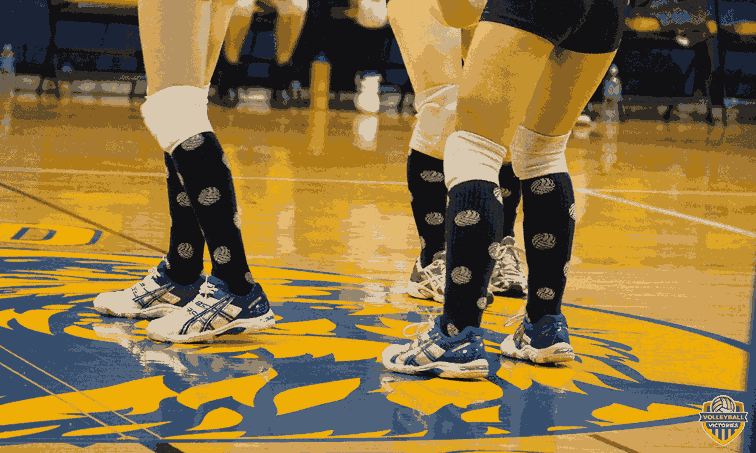
Socks may seem trivial, but the right pair provides additional cushioning and support. They also help in preventing blisters, a common annoyance for players.
Footwear
Footwear is instrumental in providing the needed support and grip on the court. While beach volleyball often sees players barefoot, indoor players have a choice between volleyball-specific shoes and cross-trainers.
Volleyball shoes offer improved sidewall and ankle support, aiding in lateral movements, and have special soles designed for grip on the slick courts.
Accessories
Accessorizing with elbow pads, ankle braces, and wrist supports can offer added protection against the high-impact nature of volleyball. These accessories help prevent potential injuries and ensure that players can give their best performance on the court without any hindrance.
A volleyball player’s attire significantly impacts their performance and experience on the court. Each piece, from jerseys to knee pads, is pivotal in ensuring comfort, protection, and freedom of movement, enabling players to focus solely on the game.
What Do Girls Wear For Volleyball Practice?
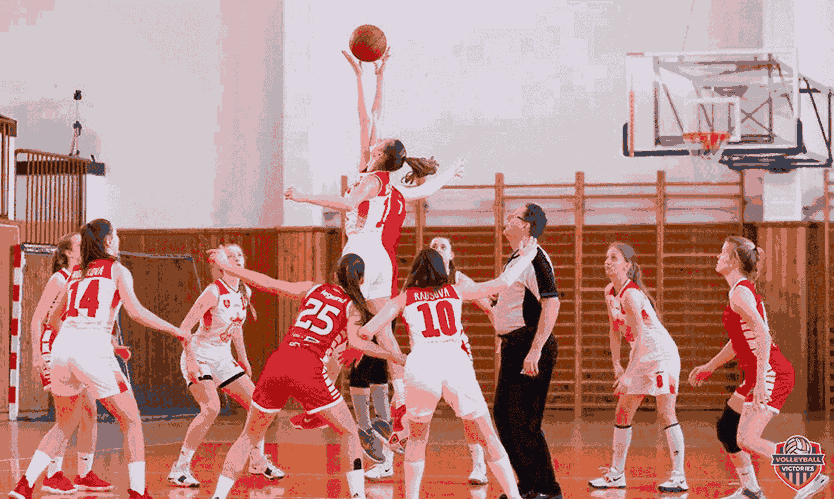
Regarding volleyball practice, girls have various options, ensuring they remain comfortable and perform to the best of their abilities. The key factors in selecting the right attire are comfort, flexibility, and proper fit. Here’s a closer look at the common choices:
T-Shirts and Tank Tops:
- A well-fitted t-shirt is a standard choice for male and female volleyball players during practice.
- Tank tops are favored for their freedom of arm movement, especially during practices where hitting is a focus. It’s also a popular choice among beach and outdoor players.
Athletic Fits:
- Volleyball-specific attire or athletic fits are designed with materials like microfibers and polyester, which help in moisture-wicking, keeping the player dry and comfortable. These lightweight materials do not become heavy with sweat, promoting a better range of motion.
Shorts:
- Spandex shorts are a common choice due to their form-fitting nature, allowing for flexibility and movement. Some players prefer wearing a longer pair of spandex shorts underneath for added protection.
- Other styles, like soccer or gym shorts, may also be used, but it’s advisable to check with the coach to ensure they meet the team’s standards.
Capri Pants and Full-Length Pants:
- Capri pants have gained popularity as they provide a longer, fitted option compared to traditional shorts and still allow for the wearing of knee pads.
- Full-length pants are usually reserved for warming up before practice or a match, especially in colder settings. However, they’re not highly recommended for actual practice due to their tendency to restrict movement.
Sports Bras and Athletic Shoes:
- A comfortable sports bra is essential for female players to ensure support and comfort during intense movements.
- Wearing supportive athletic shoes with a good grip on the court surface is crucial for safe and effective play.
Additional Tips:
- Checking the fit by moving around, jogging, squatting, or lunging in the attire before actual practice can help ensure comfort and suitability.
- Lightweight and breathable fabrics are preferred to keep the player dry and comfortable.
- While there’s no one-size-fits-all attire, common items include loose-fitting shorts or skirts, tank tops, sports bras, and lightweight sneakers.
The choice of attire can significantly impact a player’s performance and comfort during practice. Hence, it’s important to make informed choices based on personal preference, comfort, and the requirements of the volleyball practice session.
Also, Read: How Many Players Are on a Volleyball Court?
What Do Men Wear For Volleyball Practice?
Regarding gearing up for volleyball practice, what men wear can significantly impact their comfort and performance on the court. Here’s a comprehensive breakdown based on different aspects of attire:
Shorts:
Volleyball shorts are crucial as they are designed to allow a full range of motion. It’s ideal to choose shorts that are neither too loose nor too tight. Quick-drying or mesh fabrics are often preferred due to their breathability and ability to keep the player cool during intense gameplay.
Some players may prefer shorter shorts for greater mobility, while others might opt for longer shorts extending to the knee based on individual preferences and styles.
T-shirts:
A well-fitted t-shirt is an essential part of the volleyball outfit. It covers and protects the body and aids in team identification. While short-sleeved t-shirts are common, long-sleeved ones can also be chosen based on personal preferences. Selecting a t-shirt made of moisture-wicking organic material is advisable to keep it cool and dry.
Breathable shirts prevent chafing and skin irritation during vigorous physical activity.
Footwear:
The right footwear is significant for overall safety and performance. Volleyball shoes should provide excellent stability, support, and traction on the court.
They should be flexible, lightweight, and well-ventilated to keep the feet cool and comfortable throughout the practice. Choosing well-cushioned shoes to absorb impact and minimize the risk of injuriesis also advisable.
Socks:
Socks help absorb moisture and sweat from your feet, keeping you dry and comfortable. It’s good to opt for socks that provide a snug fit without being overly tight to reduce the chances of friction or slippage that can lead to blisters.
Knee or ankle-length socks can be chosen based on personal preference.
Additional Gear:
For those who engage in indoor volleyball, wearing knee pads is advisable to protect against impact and abrasions, reducing the risk of knee injuries. Selecting knee pads that fit properly and stay securely in place during play is crucial.
They should also have sufficient padding to cushion your knees without being overly bulky or restrictive.
This comprehensive attire ensures that men are well-prepared and comfortable during their volleyball practice, ready to give their best performance on the court.
What Do Beach Volleyball Players Wear?
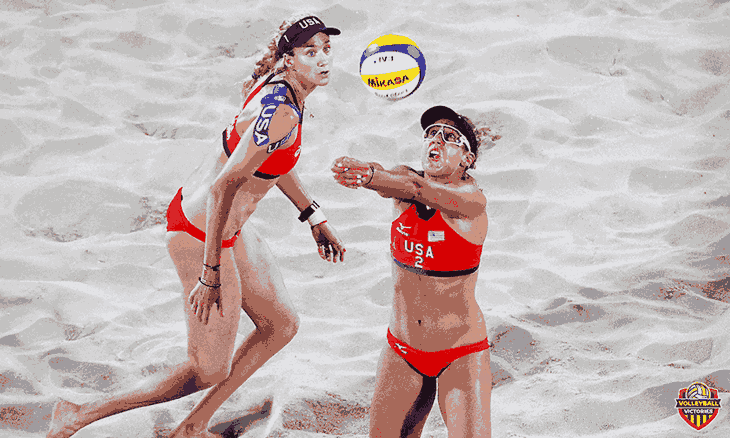
Beach volleyball players usually don attire that provides comfort, allows unrestrictive movement, and is suitable for sandy and often sunny environments. The typical clothing includes:
- Men: They often wear tank tops and shorts, with shorts being loose-fitting and lightweight to promote free movement. Accessories like hats and sunglasses are common to protect from the sun.
- Women: The attire ranges from bikinis to one-piece swimsuits for easy movement. Alternatives include long sleeves, shorts, and tank tops, especially in warmer weather.
- General: Both men and women may opt for UV-protective clothing to shield against the sun’s rays. Sand socks are also common to protect the feet from hot sand. The fabric of the clothing is typically lightweight and breathable to keep players cool and allow for free movement.
Uniform exceptions occur based on personal preferences or statements, like the Norwegian women’s beach volleyball team’s choice to wear shorts at a championship event as a stand against strict uniform rules. This attire reflects the sport’s casual yet active nature, allowing players to perform at their best in beach environments.
Also, Read: How to Get Better at Volleyball
What Shoes Can I Wear To Volleyball Practice?
Selecting the right pair of shoes for volleyball practice is crucial as it can significantly impact your performance on the court. Here’s a breakdown of the various types of shoes you can consider for your volleyball practice:
Volleyball-Specific Shoes
Volleyball-specific shoes are designed to cater to the movements and actions typical in a volleyball game. They come with a gum-rubber sole, which provides excellent grip on the court, volleyball eyelets for laces, good ankle support, and a decent amount of cushioning.
Popular choices include:
-
- Mizuno Wave Momentum 2 (Best overall for women)
- ASICS Men’s GEL-ROCKET 9 (Best overall for men)
- ASICS Upcourt 4 (Best budget for men)
- Mizuno Women’s Cyclone Speed 2 (Best budget for women).
Cross-Trainers
While volleyball-specific shoes are always recommended, players may opt for cross-trainers. They are a hybrid athletic shoe designed to allow athletes to move differently.
Their construction incorporates aspects of running shoes, tennis shoes, and volleyball shoes.
Basketball Shoes
Some basketball shoes can also be a good fit for volleyball due to their cushioning, ankle support, and traction on the court. For instance, the Nike Giannis Immortality basketball shoe is lightweight, highly responsive, and enables quick lateral micro-adjustments, making it a great option for volleyball players.
Popular Brands and Models
Various brands offer excellent volleyball shoes. Some notable models include:
-
- Adidas Crazyflight
- Nike React Hyperset
- Nike Zoom HyperAce 2
- Mizuno Wave Lightning Z6
- Asics Netburner FF (MT3).
Considerations When Buying
- Look for shoes with a gum-rubber sole for good grip, sufficient ankle support, and decent cushioning.
- Try on the shoes and move around to ensure they fit well and are comfortable before purchasing.
- Additionally, considering the shoe’s breathability, weight, and flexibility can contribute to a better volleyball practice experience.
Popular Among Professionals
The Asics Upcourt 5 is popular among players due to its flexibility, durability, and comfort, making it a great choice for most positions.
With the right pair of shoes, you can ensure you are well-prepared and comfortable during your volleyball practice, allowing you to focus on improving your skills and performance on the court.
Volleyball Essentials For Beginners
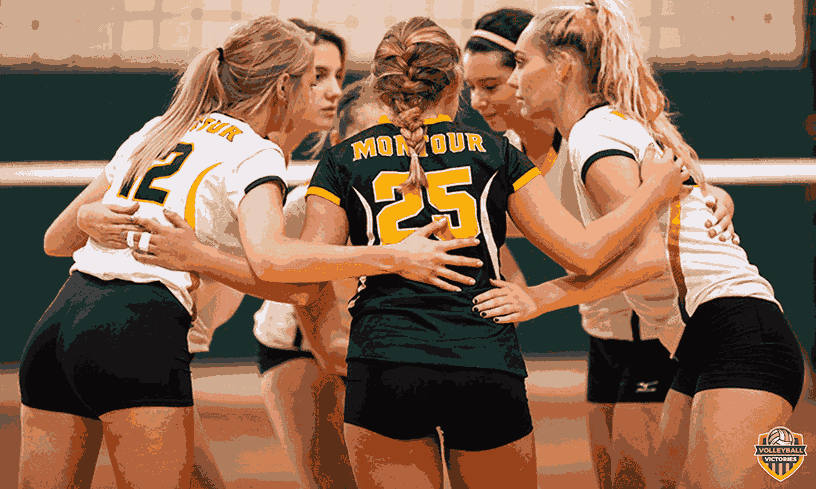
Starting on a volleyball journey requires a combination of enthusiasm, basic skill understanding, and the right gear. For beginners, especially, knowing what to wear is crucial as it can significantly impact learning and enjoyment of the game. Here’s a breakdown of the volleyball essentials every beginner should consider:
Footwear:
- Volleyball Shoes: Specific volleyball shoes provide the necessary grip on the court, ensuring safety and boosting performance.
Apparel:
- Jerseys/Tops: Comfortable, breathable tops are essential to keep you dry and comfortable.
- Shorts/Spandex: Choose between shorts or spandex based on what makes you comfortable while allowing freedom of movement.
- Knee Pads: Volleyball often requires diving and kneeling; knee pads provide the necessary protection.
Gear:
- Volleyballs: Having a good quality volleyball is fundamental for practice.
- Volleyball Bag: A bag to carry your gear, including a hydration bottle, is essential for organization and convenience.
Training Equipment:
- Net: A good quality net is vital for practicing serves and volleys.
- Cones and Markers: These help in drill setups and skill training exercises.
Additional Items:
- Water Bottle: Staying hydrated is crucial; have a water bottle handy.
- First Aid Kit: Accidents happen; a basic kit can be a lifesaver.
The right attire and gear enable a smooth introduction to the sport and foster a conducive learning environment. As you progress, you should add more specific items to your volleyball kit tailored to your preferences and playing style.
Also, Read: Why Are Volleyball Shorts So Short and Tight?
FAQs
Can Girls Wear Shorts In Volleyball?
Yes, girls can wear shorts while playing volleyball. The sport is often played in warm conditions, which makes shorts a suitable option. They allow for better air circulation, helping players stay cool and comfortable during games. Unlike pants, it’s highly advisable to wear shorts as they don’t hinder movement. Most female players opt for shorts between 2 and 4 inches long, though they can choose shorter or longer ones depending on personal preferences and comfort. Shorts are a common choice, but players aren’t restricted to them alone; they can also wear pants to practices.
What Age Should A Girl Start Playing Volleyball?
The age at which a girl should start playing volleyball can vary based on individual physical maturity and skill level. However, it’s commonly suggested that age 8 to 10 is a good time to begin, with more competitive play often starting around 12 or 13. Many volleyball clubs have age groups for players as young as 5 or 6, although most girls start around 9. Recreational teams are a good platform for beginners since they focus more on skill development and less on competition.
What Clothing Is Typically Worn For Volleyball?
The clothing typically worn for volleyball can vary depending on whether it’s professional, recreational, or beach volleyball. Players often wear synthetic or moisture-wicking materials in professional and recreational settings to keep cool and dry during intense plays. Common items include:
- Dry-fit shirts or jerseys made of synthetic materials.
- Comfortable t-shirts, tank tops, or performance jerseys with moisture-wicking material.
- Stretchy shorts that facilitate wide steps, crouching, and jumping without the risk of ripping.
- Athletic shoes with good shock absorption and arch support.
For beach volleyball, the attire is usually more relaxed, with women wearing one or two-piece swimsuits and men wearing shorts and tank tops. While the outfits may not constitute an official uniform, they often match in style and color. Players usually go barefoot, but socks may be allowed if the sand is too hot, and accessories like hats may be worn to shield against sun glare.
Do volleyball players wear leggings?
Yes, volleyball players, especially females, wear leggings to provide comfort, support, and enhanced mobility during play. Leggings help keep muscles warm, absorb sweat, and offer protection against injuries from lateral movements, which are common in volleyball. They also provide coverage, making players feel more confident, especially during the extensive and dynamic movements involved in the game.
Conclusion
Volleyball is an engaging sport requiring appropriate gear for optimal performance and comfort. The attire varies, with professionals and recreational players often donning synthetic or moisture-wicking materials, while beach volleyball attire leans towards casual.
Essentials for beginners include acquiring volleyball-specific shoes, knee pads, and a quality volleyball. Knowledge of the game’s basics and mastering body control on the court is equally vital for a solid start in this sport.
The choice between shorts or leggings is often a personal preference, catering to comfort and the nature of the game. Girls can indeed wear shorts in volleyball, and starting ages for girls typically range from 8 to 10 years old.
With the right mindset towards teamwork and communication and the correct attire and essential gear, any aspiring volleyball player is well on the path to enjoying and excelling in this exhilarating sport.
